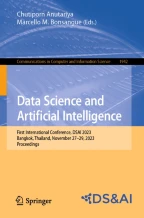
Web usage mining is a crucial research area that aims to uncover user behavior patterns from web log data because web usage mining can be used to analyze a website’s usage. This study examined web usage mining to discover online users’ usage patterns and used the results to redesign and improve the government website. This study aims to help online customers obtain a better experience. A dataset was collected from the Metropolitan Electricity Authority (MEA) website. Various algorithms, including association rule mining (Apriori and Frequent Pattern-Growth (FP-Growth)) and sequential pattern mining (Generalized Sequential Pattern (GSP) and Prefix-Span), were used to mine the user usage data. The first 30 frequently visited patterns of web usage mining results were selected for analysis and to develop a prototype. It revealed that most pages were accessed directly. Moreover, most users were interested in alternative energy information, the Fuel Adjustment Charge (at the given time) or the FT rate, the power outage announcement page, and reducing electric expenses information. Furthermore, the analysis indicated that customers were interested in making online processes, such as using the contact-us feature, downloading forms, and calculating their electric expenses. A survey was conducted with 30 participants and the results were compared with the usage data from the weblog. Welch’s t-test was utilized to evaluate the prototype. The findings indicated that the newly implemented website, based on the user usage patterns, was more effective and reduced the user’s usage time.
Supported by AIT and MEA.
This is a preview of subscription content, log in via an institution to check access.